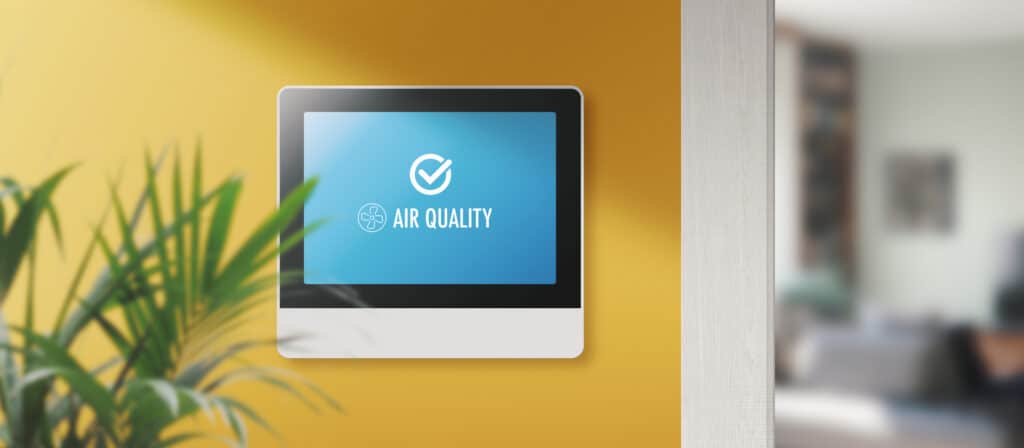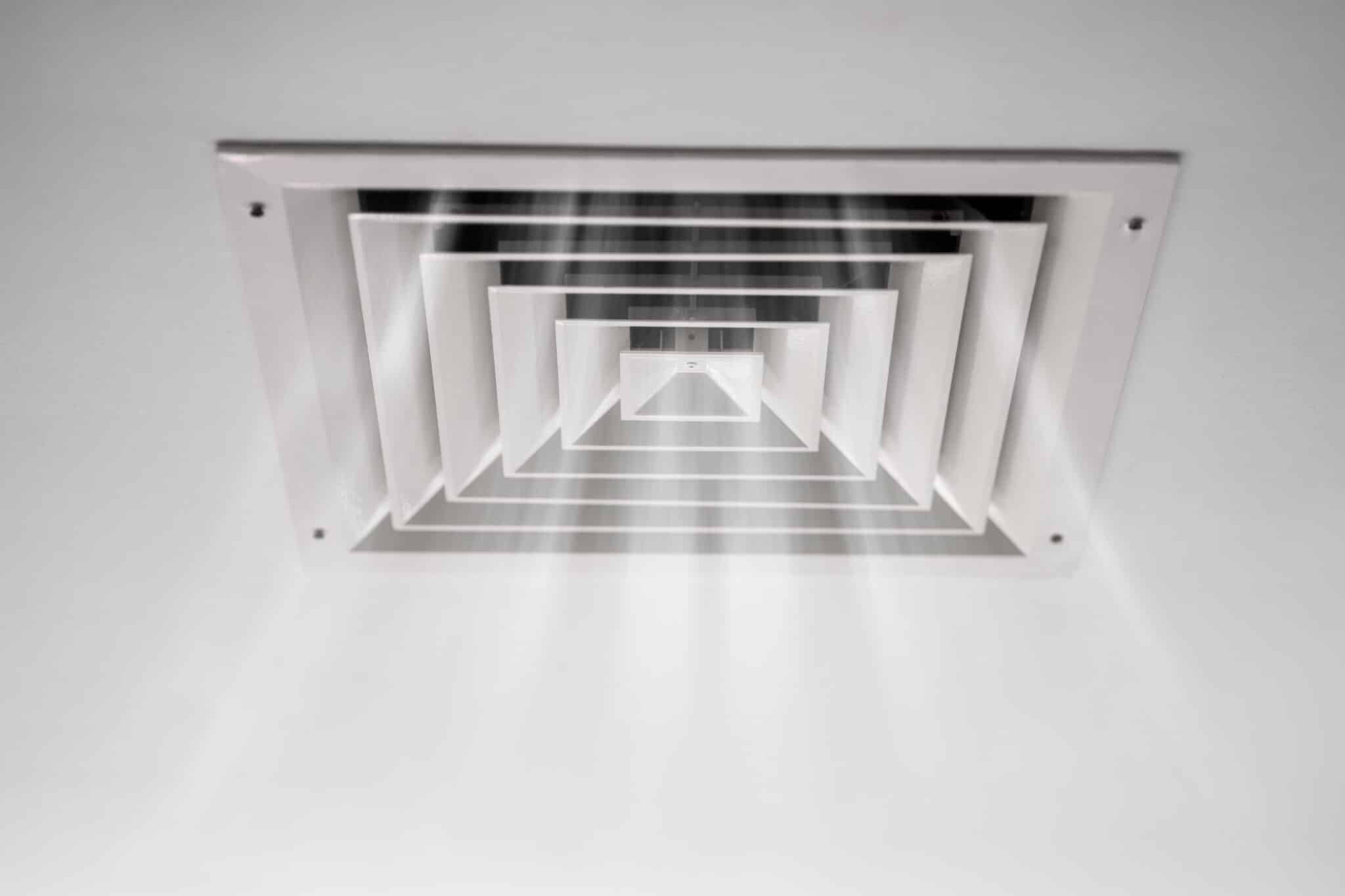
Advanced Air Quality Monitoring for Homeowners
With the rise in pollution levels, homeowners in Carrollton, TX, are increasingly turning to advanced air quality monitoring systems. These innovative solutions offer a way to keep track of the air you breathe inside your home. They ensure the environment is safe and comfortable for you and your family.
Air quality monitoring has become a key tool in managing indoor environments effectively. It’s not just about comfort, it’s about health. Residents in Arlington, TX, and beyond are recognizing the benefits of having real-time data about their indoor air. This information helps in making informed decisions about ventilation and purification.
The technology behind air quality monitoring has evolved significantly. Today’s systems can detect a wide range of pollutants, from common allergens to more harmful substances like volatile organic compounds (VOCs). By understanding what’s in the air, homeowners can take steps to mitigate risks and improve overall air quality.
Choosing the right air quality monitoring system is crucial. It’s about finding a balance between technology and ease of use. With the right system in place, homeowners can enjoy peace of mind, knowing their indoor air is being monitored and managed for the health and well-being of everyone in the home.
The Importance of Indoor Air Quality
Understanding the importance of indoor air quality is crucial for maintaining a healthy home environment. Air quality monitoring systems play a vital role in this process, offering homeowners in Carrollton, TX, the ability to track and manage the air they breathe. These systems provide real-time insights into the presence of pollutants, allowing for immediate action to ensure a safer living space. By staying informed, families can avoid the health risks associated with poor indoor air quality.
Air quality monitoring systems are designed to detect a wide array of pollutants, including dust, pollen, mold spores, and chemical vapors. This capability is especially beneficial in areas like Arlington, TX, where seasonal changes can affect indoor air quality. Homeowners can use this information to adjust their air purification strategies, ensuring that their indoor environment remains healthy throughout the year. Regular monitoring helps in identifying patterns and making necessary adjustments to indoor air management practices.
The integration of air quality monitoring systems into daily life is simpler than many might think. Modern systems are user-friendly, with features designed for ease of use without compromising on efficiency. Homeowners can easily check their indoor air quality through smartphone apps or other digital interfaces. This accessibility encourages regular engagement with the system, fostering a proactive approach to indoor air health.
Lastly, the benefits of investing in air quality monitoring extend beyond just health. A home with consistently monitored and managed air quality is more comfortable and inviting. It becomes a safer haven for those with allergies or respiratory conditions. For residents of Carrollton, TX, and surrounding areas, taking control of indoor air quality is a step towards creating a healthier, more enjoyable living environment for everyone in the home.
Types of Air Quality Monitoring Systems
When exploring air quality monitoring systems, homeowners will find various types designed to meet different needs. Portable units are popular for their flexibility, allowing users to measure air quality in multiple rooms. These devices are small, easy to move, and provide immediate feedback on the air’s condition. They are ideal for people who want to monitor specific areas of their home at different times.
Another option is fixed air quality monitoring systems, which offer continuous tracking. Installed in a central location, these systems constantly analyze the air, providing updates and alerts through connected apps. This constant vigilance ensures that any changes in air quality are promptly addressed, making it a great choice for families concerned about maintaining a healthy indoor environment year-round.
Smart air quality monitors integrate seamlessly with home automation systems. These devices not only track air quality but also can automatically adjust air purifiers or HVAC systems to improve indoor air. By connecting to other smart home devices, they create an ecosystem that actively works to keep the air clean, offering a hands-off approach to air quality management.
Lastly, wearable air quality sensors offer personal monitoring, giving insights into the air quality in immediate surroundings, even outside the home. While not a primary solution for home air quality monitoring, they complement other systems by providing data on exposure in different environments. This can be particularly useful for individuals with respiratory conditions or allergies, as it helps them avoid areas with poor air quality.

How Air Quality Monitoring Works
Understanding how air quality monitoring works is essential for homeowners interested in maintaining a healthy indoor environment. At its core, air quality monitoring involves the use of sensors to detect pollutants and particulates in the air. These sensors are sophisticated enough to identify a range of substances, from common dust and pollen to more dangerous chemicals and gases. This technology provides the data needed to assess indoor air quality accurately.
Once pollutants are detected, air quality monitoring systems analyze the data and present it in an understandable format. Homeowners can view this information through digital displays or smartphone apps, making it easy to monitor indoor air conditions in real time. This immediate access to air quality data empowers homeowners to make informed decisions about how to improve their indoor environment, whether it’s by adjusting the HVAC system or using air purifiers.
For continuous improvement of indoor air quality, some systems offer recommendations based on the collected data. They might suggest increasing ventilation, changing air filters, or identifying specific sources of pollution within the home. By acting on these recommendations, homeowners can proactively manage their indoor air quality, ensuring a healthier living space for their families.
Moreover, advanced air quality monitoring systems can integrate with other smart home devices to automate air quality management. For example, when poor air quality is detected, the system can automatically activate air purifiers or adjust the HVAC system to filter out pollutants. This seamless interaction not only simplifies the process of maintaining healthy indoor air but also enhances the overall comfort and safety of the home.
Benefits of Advanced Air Quality Monitoring
Advanced air quality monitoring systems offer significant benefits that extend beyond simple awareness of indoor air conditions. These systems empower homeowners in Carrollton, TX, with the ability to detect and respond to air quality issues in real-time. This immediate responsiveness helps in maintaining a consistently healthy indoor environment, crucial for families, especially those with young children or individuals with health concerns. By staying ahead of potential air quality problems, homeowners can ensure a safer living space.
One of the standout advantages of using advanced air quality monitoring is the peace of mind it brings. Knowing that the air in your home is continuously being monitored and managed can relieve the stress associated with health risks of poor indoor air quality. This is especially important in areas like Arlington, TX, where external factors such as pollution or seasonal allergens can impact indoor air. Homeowners can rest easier, knowing they are taking proactive steps to protect their family’s health.
Additionally, these systems contribute to a more energy-efficient home. By integrating with other smart home devices, air quality monitors can automate the operation of HVAC systems, ensuring they run only when necessary to address air quality concerns. This not only improves indoor air quality but also optimizes energy use, leading to a more sustainable and cost-effective home environment. Efficiently managing indoor air not only supports health but also aligns with eco-friendly living practices.
Lastly, the data collected by air quality monitoring systems can offer insights into long-term trends in your home’s air quality. This information can be invaluable in making informed decisions about home improvements or adjustments to your lifestyle that can further enhance indoor air quality. For instance, identifying consistent sources of pollutants can guide homeowners in Carrollton, TX, to make changes that have a lasting positive impact on their indoor environment, ensuring a healthier home for years to come.
Choosing the Right Air Quality Monitoring System
Choosing the right air quality monitoring system requires understanding the specific needs of your home and family. In Carrollton, TX, homeowners should consider factors like the size of their home and the typical pollutants in their area. A system that offers flexibility and can monitor a range of contaminants, from dust to chemical vapors, might be the best choice. It’s also wise to look for a system with user-friendly features, allowing easy access to air quality data.
Integration capabilities are another important aspect to consider. A system that works well with other smart home devices can automate the process of improving indoor air quality. For example, if poor air quality is detected, the system could automatically adjust your HVAC system or air purifiers to tackle the problem. This seamless operation not only simplifies maintenance but also enhances the living environment in Arlington, TX, homes.
Durability and reliability are key when selecting an air quality monitoring system. You want a device that consistently provides accurate data and can withstand the test of time. Researching products with strong customer reviews and reliable support can guide you in making a decision that ensures long-term satisfaction. This approach helps in maintaining a healthy indoor environment without the need for frequent adjustments or replacements.
Finally, consider the level of engagement you want with your air quality monitoring system. Some homeowners prefer a set-it-and-forget-it model, while others like to be more involved, checking data and making adjustments as needed. Finding a system that matches your personal preference for interaction can make the experience more enjoyable and effective. By carefully selecting a system, you ensure your home remains a healthy haven for your family.
Installation and Maintenance Tips
After selecting the right air quality monitoring system for your home in Carrollton, TX, the next step is installation and maintenance. To ensure optimal performance, place your monitoring device in a central location away from direct sunlight and drafts. This position helps in accurately assessing your home’s air quality. Regularly check the system to make sure it’s functioning correctly and keep it clean from dust and debris.
For homeowners in Arlington, TX, understanding how to maintain their air quality monitoring system is crucial for long-term effectiveness. Replace filters or sensors as recommended by the manufacturer to maintain accuracy. Additionally, updating the device’s software, if applicable, ensures you benefit from the latest features and improvements. Staying proactive in maintenance can prevent unexpected issues and keep your air quality monitoring efforts on track.
Engaging with your air quality monitoring system regularly can also enhance its benefits. By reviewing the data it provides, you can identify trends in your indoor air quality. This insight allows for informed decisions on improving air quality, such as adjusting your HVAC settings or increasing ventilation on days when pollution levels are high. Such actions contribute significantly to creating a healthier living environment.
Finally, consider consulting with a professional for the initial setup of your air quality monitoring system. Experts can offer valuable advice on the best placement for your device and how to integrate it with other smart home systems. They can also provide tips on interpreting the data and making adjustments to your home in Carrollton, TX, to improve air quality. Leveraging professional guidance ensures you get the most out of your air quality monitoring system, safeguarding the health of your home.
Integrating Air Quality Monitoring with Smart Home Systems
Integrating air quality monitoring systems with smart home technology offers a streamlined approach to managing indoor air quality. By connecting these systems to other smart devices in your home, you can automate the process of adjusting air purification based on real-time data. This ensures that residents in Carrollton, TX, enjoy a consistently healthy environment without manual intervention. Such integration can significantly enhance the comfort and safety of your living space.
For instance, when the air quality monitoring system detects a drop in air quality, it can automatically instruct your HVAC system to increase filtration. This immediate response is crucial in maintaining optimal indoor air conditions, especially during times when outdoor air quality in Arlington, TX, may affect the indoor environment. The seamless communication between devices not only simplifies air quality management but also supports a proactive approach to health and wellness.
Moreover, integrating air quality monitoring with smart home systems allows for personalized settings that cater to the specific needs of your household. Whether it’s adjusting the humidity levels or ensuring the air is clean for a family member with allergies, customization is at your fingertips. This level of control empowers homeowners to create a living environment that promotes well-being and comfort for everyone in the home.
Finally, the convenience of managing your air quality monitoring system through a smartphone app cannot be overstated. With just a few taps, you can review your home’s air quality data, make adjustments to settings, and receive alerts about changes in air quality. This accessibility ensures that homeowners stay informed and can react quickly to any issues, making it easier than ever to maintain a healthy indoor environment.

Frequently Asked Questions
What is advanced air quality monitoring?
Advanced air quality monitoring involves using sophisticated systems to track indoor air pollutants. These systems detect various contaminants, including dust, mold, and chemical vapors, in real-time. By providing detailed insights, they enable homeowners to take immediate action to improve their indoor air. This technology ensures families enjoy a healthier living environment by maintaining clean air within their homes.
How does air quality affect health?
Air quality plays a crucial role in maintaining good health. Poor air can lead to respiratory issues, allergies, and even long-term conditions like asthma. Cleaner air, on the other hand, supports overall well-being and enhances living comfort. Therefore, air quality monitoring is essential for identifying and managing pollutants that can harm our health.
What are common air pollutants?
Common air pollutants include dust, pet dander, pollen, and chemical vapors from household cleaners. These contaminants can degrade indoor air quality and impact health. Mold spores and tobacco smoke are also frequent offenders, contributing to poor air conditions. Air quality monitoring helps identify these pollutants, allowing homeowners to address them promptly.
How to choose an air quality monitoring device?
When choosing an air quality monitoring device, consider its ability to detect a wide range of pollutants. Look for systems that offer real-time updates, so you can act quickly to improve your home’s air. It’s also important to select a device with user-friendly features, making it easy to monitor and understand your indoor environment. Lastly, ensure the device integrates well with your home’s existing smart systems for seamless operation.
Can air quality monitoring improve HVAC efficiency?
Yes, air quality monitoring can enhance HVAC efficiency. By identifying pollutants, it helps optimize air flow and temperature control. This leads to less strain on the system, extending its lifespan. Efficient HVAC systems also contribute to healthier indoor environments by maintaining clean air.







